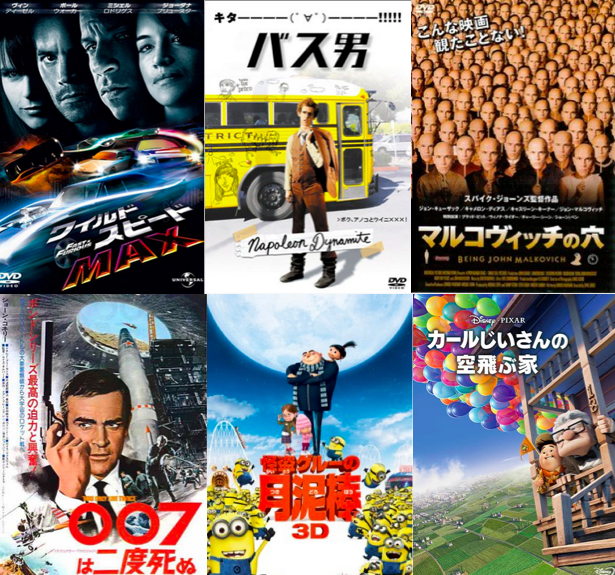JQ Magazine: North American Alumni Regional Conference Advances JETAA Initiative
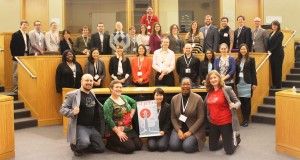
Delegates to the 2014 JETAA Regional Conference at the Edwin O. Reischauer Institute of Japanese Studies at Harvard University, Jan. 2014. (Courtesy of Tim Ogino)
By Tim Ogino (Akita-ken, 2011-13) for JQ magazine. Tim returned from Japan last summer and immediately became involved in NEJETAA as communications coordinator/webmaster. After spending two wonderful years in Tohoku, he returned to Boston to attend graduate school and is excited to remain involved with the Japanese community, looking forward to the day he can return to the land of festivals, kiritampo, and karaoke.
With New Year’s goals and resolutions firmly prepared, 34 JETAA delegates from 15 chapters across North America gathered for the 2014 JETAA Regional Conference at the Edwin O. Reischauer Institute of Japanese Studies at Harvard University in Cambridge, MA from Jan. 10-12 to discuss ways to improve their JETAA chapters. The New England JETAA chapter played host to this year’s conference and organized a series of discussions, workshops, and seminars under the theme of “Membership Management.”
The week preceding the conference was filled with anticipation about not only the content of the seminars and workshops, but also the weather in Boston. Stories about the week’s now infamous “polar-vortex” surely were intimidating to JET Alumni from warmer climates. Luckily, the temperatures recovered just in time for a comfortable and productive weekend for all in attendance.
The conference began on Friday night with a welcome reception graciously hosted by the Consul General of Japan in Boston, Akira Muto, which featured special guests Museum of Fine Arts Curator Dr. Anne Nishimura Morse and founding JETAA member Professor Ian Condry (Miyagi-ken, 1988-89) of MIT. Their kind remarks emphasized the importance of membership in JETAA as well as the presence of Japanese culture and art in America, setting an ambitious tone for the rest of the weekend.
CLAIR magazine “JET Plaza” series: Philippe Arseneau (Miyagi)
Each month, current and former JET participants are featured in the “JET Plaza” section of the CLAIR Forum magazine. The January 2014 edition includes an article by JET alumnus Philippe Arseneau. Posted by Celine Castex (Chiba-ken, 2006-11), currently programme coordinator at CLAIR Tokyo.
***********
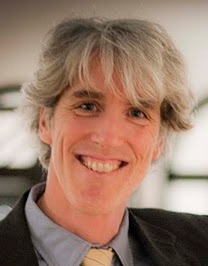
“In my experience, four factors made a difference in this awkward transition from Japan to Canada, from classroom to career, especially with regards to landing and holding a rewarding job: building a professional network; showing initiative; getting involved; and tailoring one’s job to one’s background and interests.”
Philippe Arseneau (Miyagi-ken, 1991-94) is from the Canadian Province of Québec and grew up in Montréal, the world’s second largest French-speaking city. Drawn to Japanese martial arts in his early age, Philippe developed an academic interest for Japan’s economic prowess while studying Labor Relations at the University of Montréal in the late 1980s. Changing his line of study to Anthropology, he specialized on Asian cultures and graduated with a Master’s degree after writing a thesis on “The Emergence of Initiation Rituals in Large Japanese Firms”. The JET Programme came as a fitting opportunity to deepen his understanding of Japan, and in the summer 1991 he was sent to Miyagi Prefecture where he taught English for the first year in the rural community of Tajiri, the second in Sendai, and the third in Natori. Soon after returning to Montréal, he worked as a sales representative for Japan Airlines until 2013. He now is a Japan lecturer at the University of Sherbrooke.
From Classroom to Career
Having graduated from the JET Programme nearly 20 years ago, I was asked earlier this year to deliver a keynote speech before representatives of the Canadian JETAA on the transition, difficult for some, from Japanese classroom to career at home. This paper is a concise version of it.
First, here is some background: I am a Montreal-born Canadian, raised in French, who learned English at school but more intensely through a series of summer jobs as a river guide in Ontario where I met my wife. And a couple of bilingual kids later, I am now pushing 50. I hold a MSc in Cultural Anthropology, with a focus on Japan. Admittedly not a market-oriented diploma. Weeks after submitting my final thesis in late spring 1991, I left to work as an ALT (AET back then) in Miyagi Prefecture where I would stay three years. A new Emperor had been anointed two years earlier. The economic bubble was starting to deflate. Japan banks were still the wealthiest on earth, the nation’s gigantic trade surplus fueled anger abroad and had caused an image problem for years, to which the JET Programme was allegedly meant to provide a partial solution by exposing western graduates to its culture in the hopes they would eventually go home to spread the gospel of a new and open Japan.
Like most ALTs, I taught English, but occasionally French. I also edited a JET prefectural newsletter called “The Miyagi Drum”. Nurturing post-graduates dreams, I spout on a new Japan cultural thesis and applied for doctoral studies at various universities around the world, expecting a grant or some kind of academic interest. Unfortunately, I never got to see the project through because of a career choice. And that brings me to the main topic of this article: professional life after JET. No doubt, the JET Programme can contribute to shaping one’s career as it did mine, though it offers less to those whose professional ambition lies outside the business of education– which was back then and perhaps still today the case with most ALTs. For want of providing highly transferable work skills, the JET experience managed at least to arouse curiosity among potential Canadian employers, but did not clinch me a job in and of itself. In my experience, four factors made a difference in this awkward transition from Japan to Canada, from classroom to career, especially with regards to landing and holding a rewarding job: building a professional network; showing initiative; getting involved; and tailoring one’s job to one’s background and interests.
*****
Writer, researcher, and JET alumnus Matt Leichter (Saitama-ken ’03-’05) will give an encore performance of his lecture, “College Education: Certain Debt, Uncertain Income.” It will again be hosted by the Henry George School of Social Science in New York City. The event date is Wednesday, January 29, at 6:30 PM. The location is not the school’s normal address; instead it will be at:
NYC Seminar and Conference Center
71 West 23rd Street (corner of 6th Ave.)
New York, NY 10010
Here is the lecture’s abstract:
Soaring costs for education, together with limited job opportunities and stagnant wage growth, place substantial financial and psychological burdens on students.
Noted columnist and researcher Matt Leichter reviews tuition inflation, cuts in public funding and the business of lending to students. Mr. Leichter will also propose reforms to the system of financing college education.
Space is limited; please register to attend by emailing hgs.billy@gmail.com.
【RocketNews24】Five of Japan’s best locations to ski and snowboard
Posted by Michelle Lynn Dinh (Shimane-ken, Chibu-mura, 2010–13), editor and writer for RocketNews24. The following article was written by Philip Kendall (Fukushima-ken, Shirakawa-shi, 2006–11), senior editor and writer for RocketNews24, a Japan-based site dedicated to bringing fun and quirky news from Asia to English speaking audiences.

For those of us up in the northern hemisphere, winter is already in full swing. And for skiers and snowboarders, that can mean only one thing: the snow-covered mountains are calling and it’s a race against the clock to get the most out of them.
Treated to generous snow dumps each winter and coupled with the fact that so much of the country is mountainous, Japan is one of the best locations in the world for ski and snowboarding fun, not to mention some of the best powder snow in the world. But which resorts should you be sure to visit before the powder turns to slush? Check out this list of five of Japan’s greatest, and our favourite, places to ski and snowboard!
JQ Magazine: Film Review—Hirokazu Kore-eda’s ‘Like Father, Like Son’

“As in his other films, Kore-eda’s action unfolds in minute detail and slowly evolving scenes. His static camera and well-balanced visual frame reference Ozu, another director concerned with Japan’s modernization and the traditional family.” (© 2013 FUJI TELEVISION NETWORK, INC.AMUSE INC.GAGA CORPORATION. All rights reserved.)
By Lyle Sylvander (Yokohama-shi, 2001-02) for JQ magazine. Lyle has completed a master’s program at the School of International and Public Affairs at Columbia University and has been writing for the JET Alumni Association of New York since 2004. He is also the goalkeeper for FC Japan, a New York City-based soccer team.
The winner of the Jury Prize at the 2013 Cannes Film Festival, Hirokazu Kore-eda’s newest film, Like Father, Like Son, features a stronger narrative arc and story than his previous films, which include the metaphysically philosophical After Life and the naturalistic Ozu-like Nobody Knows. In fact, the film’s plot reads like a Hollywood high-concept pitch: two families discover that their children are not their own due to a switch at birth. Developing a “nature vs. nurture”-type approach to the subject, Kore-eda gives the families different socioeconomic backgrounds.
Ryota Nonomiya (Masaharu Fukuyama) is a high-achieving architect who lives in a modern Tokyo high-rise apartment with his wife Midori and their six-year-old son Keita (Keita Ninomiya). The other father, Yudai Saiki (Lily Franky), is a working class shopkeeper who lives on the outskirts of the city in a nondescript housing block with his wife Yukari (Yoko Maki) and the young Ryusei (Hwang Sho-gen). By presenting these two disparate backgrounds, Kore-eda examines the nature of father-son relationships and familial influence in modern Japan.
Much of the film’s action concerns the responses to the shocking new information. Do the families try and “switch” the children again so that the original wrong can be corrected? Now that they are inseparably involved in each others’ lives, do they try and raise the children together? Or do they simply carry on as before, complicit in their knowledge that neither child is living with his biological parents? Kore-eda examines each of these scenarios as the characters try to confront a situation that life has not prepared them for.
【RocketNews24】Yes, Mountain Dew flavoured corn chips are a thing in Japan – and they taste…
Posted by Michelle Lynn Dinh (Shimane-ken, Chibu-mura, 2010–13), editor and writer for RocketNews24. The following article was written by Philip Kendall (Fukushima-ken, Shirakawa-shi, 2006–11), senior editor and writer for RocketNews24, a Japan-based site dedicated to bringing fun and quirky news from Asia to English speaking audiences.
We see a lot of weird stuff on the internet, but corn snacks made to taste – and fizz, no less – like the carbonated soft drink Mountain Dew are undoubtedly the oddest thing to happen since millions of adults across the globe simultaneously lied to their children about a bearded man sneaking into their home and leaving gifts for having refrained from murdering anyone or punching an otter since the previous December.
Nevertheless, as the internet chatter suggests, Mountain Dew corn snacks really do exist here in Japan, and so despite imagining that they’d taste about as good as minty orange juice, we tracked some down and, along with a can of actual Mountain Dew (or “Mtn Dew” as it’s now being branded in the US, because who has time fr vwls?) for comparison, conducted a little taste test of our own.
Full impressions after the jump.
JETAA Ottawa Newsletter – December 2013
Via JETAA Ottawa. Posted by Gemma Villanueva (Fukushima 2008-11), the past editor for the JETAA Ottawa Newsletter.
The latest digital issue of the JETAA Ottawa Newsletter can be viewed here: http://us4.campaign-archive2.com/?u=4d0d4aa436ad87ff44921adec&id=80f9a73363
What’s in this issue?
Download past issues here:
http://us4.campaignarchive2.com/home/?u=4d0d4aa436ad87ff4492
1adec&id=13d4251245
Justin’s Japan: ‘Evangelion: 3.0,’ Stanley Clarke Trio, K-pop Concert Debuts
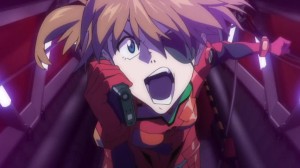
Evangelion: 3.0 You Can (Not) Redo makes its New York theatrical debut at Big Cinemas Manhattan Jan. 10. (© khara. Licensed by FUNimation® Productions, Ltd. All Rights Reserved.)
By JQ magazine editor Justin Tedaldi (CIR Kobe-shi, 2001-02) for Examiner.com. Visit his Japanese culture page here for related stories.
Start 2014 off right by heading down to your local concert hall, cinema or arts center for some fantastic new year’s fare. Whether you enjoy cutting edge anime, a performance from Grammy-winning and pop sensations, or a classic film favorite of the legendary Donald Richie, treat yourself and catch a break from the cold.
This month’s highlights include:
Sunday, Jan. 5, 7:00 p.m.
MIKA Samba Jazz Trio
Somethin’ Jazz Club, 212 East 52nd Street, 3rd Floor
$12
Presented by Mar Creation, New York-based samba jazz pianist and recording artist MIKA will have her first concert in 2014 at midtown’s venerable Somethin’ Jazz Club, supported by Rafael Barata (drums) and Eduardo Belo (bass). A native of Rio de Janeiro, Barata brings the bossa nova, Belo brings the bottom, and MIKA knits it all together, evoking the warm, soothing sounds of Ipanema and beyond to kick off the new year in style.
Jan. 8-12
Niwa Gekidan Penino—The Room Nobody Knows
Japan Society, 333 East 47th Street
$28/$22 Japan Society members
North American debut! Two brothers inhabit a mysterious, dreamlike apartment. On the day of the elder’s birthday, the younger, who is supposed to be studying for college entrance exams, is preoccupied with creating unusual objects for the celebration. Meanwhile, in the upper room, the younger brother’s alter egos—derived from his wild imagination and taking the form of two creatures, one with a sheep’s head and another with pig features—help with the party preparations. Written and directed by psychiatrist turned most-talked-about theater artist Kuro Tanino and performed by his company Niwa Gekidan Penino, The Room Nobody Knows lures you into a weird yet funny world hidden deep within the Tokyo metropolis. Performed in Japanese with English subtitles. A MetLife Meet the Artists Reception follows the Jan. 8 performance.
Thursday, Jan. 9, 7:30 p.m.
Best Buy Theater, 1515 Broadway
$50-$180
Forming in their native South Korea in 2008 and big in Japan (where they have toured and released albums since 2011), boy band U-KISS is finally touring America for the very first time! U-KISS (an acronym for Ubiquitous Korean International Super Star) consists of members Kevin, Eli, AJ, Soohyun, Kiseop, and Hoon. The band will kick off a new series of concerts titled “THE HEADLINERS,” which promises to bring spectacular 360-degree content of these rising pop princes.
For the complete story, click here.
JQ Magazine: Tohoku Projects—The TOMODACHI Initiative

Suzanne Basalla, left, presents The TOMODACHI Generation: Investing in the NEXT Generation of U.S – Japan Relations, Chicago, Oct. 11, 2013. (Sheila Burt)
By Sheila Burt (Toyama-ken, 2010-12) for JQ magazine. As part of an occasional series, Sheila is profiling individuals who are or were in some way involved with rebuilding efforts in the Tohoku region. Her first post was on the writing project 3,000 Letters to Japan. After JET, Burt spent an additional year in Japan working at a private school and translation company. She recently returned to the Chicago area. Read more of her reporting at her blog, Stories from the Inaka.
Having been posted in Tokyo during the disastrous March 11 earthquake and tsunami of 2011, diplomat Suzanne Basalla saw firsthand how quickly Japan changed in a matter of seconds.
As senior advisor to former Ambassador John V. Roos in the Embassy of the United States in Tokyo, Basalla had been living in Japan since March 2010, advising Roos on several economic and foreign policy matters. A few months after 3/11, Basalla visited Tohoku and started thinking of ways to encourage redevelopment in the stricken area, “trying to do what we [could] to create hope and support,” she recalled. Although her post with the embassy ended in March 2012, she realized she wasn’t ready to go back to the Pentagon.
Instead, Basalla and a team of others pooled their efforts to create the TOMODACHI Initiative, a public-private partnership established in the wake of 3/11 with the U.S.-Japan Council in Washington. TOMODACHI helps coordinate educational, business and cultural exchange programs for Japanese youth, particularly students in Tohoku, where development opportunities are still few and far between. Presenting at a Japan American Society of Chicago event last October, Basalla referred to TOMODACHI as “an incredibly important initiative…with a path-breaking paradigm.”
“Part of leadership is getting to know yourself,” said Basalla, who now serves as executive vice president of the U.S.-Japan Council. “TOMODACHI’s initiative is to inspire and empower young Japanese and Americans by giving them experience, skills and confidence to achieve their dreams and contribute to a better world.”
JQ Magazine: Manga Review — ‘Showa 1926-1939: A History of Japan’
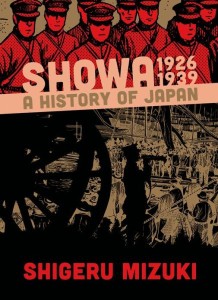
“If you enjoy or are interested in manga, history and yokai, or if you appreciate excellent works such as Barefoot Gen and Maus, then Showa 1926-1939: A History of Japan and the rest of the series is a must-read.” (Drawn and Quarterly)
By Julio Perez Jr. (Kyoto-shi, 2011-13) for JQ magazine. A bibliophile, writer, translator, and graduate from Columbia University, Julio is currently seeking opportunities with publications in New York. You can follow his enthusiasm for Japan, literature, and board gaming on Twitter @brittlejules.
Shigeru Mizuki is a world-famous manga artist and writer best known for his work on yokai, which deals with Japanese ghosts, monsters and supernatural stories. He is the creator of Ge Ge Ge no Kitaro, his most famous work about yokai, and he is also well known and respected in Japan for his autobiographical work about growing up and serving as as a soldier in World War II-era Japan. He created a well researched historical and autobiographical manga about the Showa period which received the Kodansha Manga Award in 1990 and is now being published in English by Drawn and Quarterly. The first of four volumes, Showa 1926-1939: A History of Japan, was translated by JET alum Zack Davisson (Nara-ken, 2001-04; Osaka-shi, 2004-06) and released last November. (For more on Davisson, read our exclusive JQ interview with him here.)
This illustrated history of Japan is praised for its accuracy in portraying the atrocities of the Japanese military during the Pacific War while also showing how the Japanese people themselves suffered on the home front. At 91 years old today, Mizuki has given us a complete and accurate account of an entire age that few alive today remember and that the rest never knew firsthand. The story is an important and valuable resource meant for generations of people who have not experienced the chaos of war and the despair of starvation. The manga is very much meant to educate the next generation of Japanese children about the controversial and darker parts of their history and to serve as a cautionary tale to remember in times of peace. It does not sugarcoat anything, and gives great insight into the tensions between Japan and China, North and South Korea, and other countries in Asia that persist today.
JETAA British Columbia Newsletter – December 2013
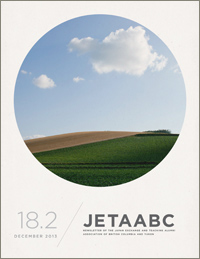
The latest issue of the JETAABC (JETAA British Columbia) Newsletter is now available. In this issue, they talk about a road trip in rural Hokkaido, the JETAA Canada Conference held in Montreal, the Sempai Program mentorship for new JETs, and much more!
- PDF: http://www.jetaabc.ca/wp-content/uploads/2013/01/NewsletterV18N2.pdf
- Online viewer version on Issuu.com at http://issuu.com/jetaabc/docs/newsletterv18n2
JQ Magazine: Hark! The Herald KFC
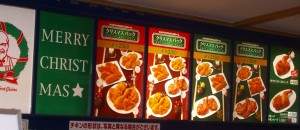
Good tidings we bring for you and your kin /
Good tidings for chicken and a happy new year. (Jarrad Skinner)
By Jarrad Skinner (Toyama-ken, 2007-11) for JQ magazine. Jarrad is an instructional designer for interactive online courses in the mental health field. Otherwise, he’s obsessed with game design, comedy, and hip-hop. After being born on Long Island, educated in Manhattan, and confused in Japan, he lives in Brooklyn. You can find him on the dance floor.
It’s Christmas Eve and KFC is out of chicken. This can’t be life. We didn’t make reservations, so we can’t have any chicken. It’s one thing to walk into KFC on Christmas Eve to get a bucket of greasy poultry parts, but it’s a whole other indignity to be told you can’t have any. Biscuits and sides will have to do.
As many of you probably already know, KFC pulled off some kind of unholy cross-cultural coup to convince a good portion of Japan that KFC and Christmas go together like peanut butter and jelly. Well, that is, if you’re American, PB&J go together naturally. And that’s really the point that I had to stubbornly learn again and again in Japan: nothing naturally goes with anything. We make it up as we go and then get used to our inventions. We become so used to them, we call them natural or traditional or don’t call them anything at all because we take them for granted like pizza with tuna fish topping.
If there’s one thing we take for granted more than readily available pairings of foods, it’s family. You might be a jackass today, but you expect family to be there tomorrow anyway. And if there’s one message that’s been drilled into our heads by the seasonal onslaught of holiday songs and shows, it’s “Go home to your family!” Every memory of every sitcom holiday special featuring some selfish oaf learning the lesson that the real present at Christmas is family reminds me that as the holidays approach in Japan I feel…unnatural.
【RocketNews24】10 little-known rules for eating Japanese food
Michelle Lynn Dinh (Shimane-ken, Chibu-mura, 2010–13) is an editor and writer for RocketNews24, a Japan-based site dedicated to bringing fun and quirky news from Asia to English speaking audiences.
Japanese food, called washoku in Japan, has just been registered as a UNESCO Intangible Cultural Heritage, but you didn’t need an official declaration to know that sushi and tempura are absolutely delicious. But while enjoying Japanese food, have you ever mixed wasabi and soy sauce as a dip for your sushi? Or how about using your bowl as a chopstick rest? If so, you’ve committed an etiquette faux pas. Take a look at our list of 10 little-known rules for eating Japanese food and save yourself some embarrassment while enjoying a traditional Japanese meal.
JQ Magazine: The Steady Riser – A Conversation with Tokyo Musician Nelson Babin-Coy
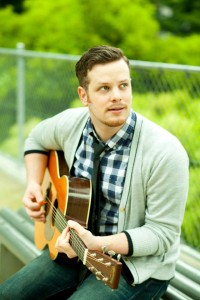
“The Japanese market is a very unique market; it’s very closed. It is kind of frustrating when I try to introduce Western ideals in my music or introduce how I feel live music should be enjoyed at gigs or live venues. If you want to dance, dance. If you want to move, move.” (Lisa (paint with stars) www.paintwithstars.com)
By Sheila Burt (Toyama-ken, 20010-12) for JQ magazine. Sheila recently returned to America after living in Japan for three years (two years in Namerikawa with JET and one year at a private school in Ehime-ken). She is currently looking for a job and welcomes all leads. View more of her work at www.sheilaburt.com.
The first time Tokyo-based musician Nelson Babin-Coy visited Japan, he was a 15-year-old high school student from the suburbs of L.A. who knew next to nothing about Japan. Interested in learning more about Japanese music during his stay in Gunma Prefecture, he started listening to what other teenagers his age were into, including the idol group Morning Musume. Yet when he first heard one of the band’s songs, he cringed a bit. “I wasn’t disgusted, but I was like, ‘This is music in Japan?’,” he laughs.
Thankfully, his host sister introduced him to the Battle Royale theme song by Dragon Ash, and he was hooked. The two weeks Babin-Coy spent in Gunma were enough to give him a new dream to follow. He wanted to live in Japan, though he had yet to figure out the how and what to do.
“I love Japanese music and lyrics,” he says. “I think Japanese artists are more artistic in the way they form their stories.”
Now 28, Babin-Coy is a rising singer-songwriter who primarily sings in Japanese and works with several native artists trying to break into the Western market. He has toured the mainland three times with his band, nothing ever lasts (currently on hiatus).
Michelle Lynn Dinh (Shimane-ken, Chibu-mura, 2010–13) is an editor and writer for RocketNews24, a Japan-based site dedicated to bringing fun and quirky news from Asia to English speaking audiences.
Hollywood films are popular around the world and Japan gets its fair share of dubbed and subtitled blockbusters. But sometimes things get a little mixed up when changing words from English to Japanese. This gives rise to translated titles that come in a wide range of strange from unintended sexual innuendos to spoilertastic summaries.
Let’s take a look at 13 weird Japanese movie titles that make you wonder what the translators were thinking.



